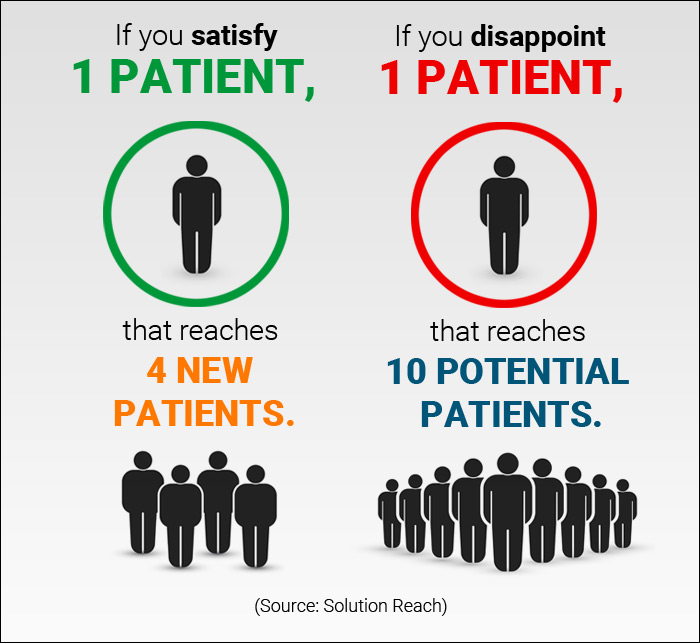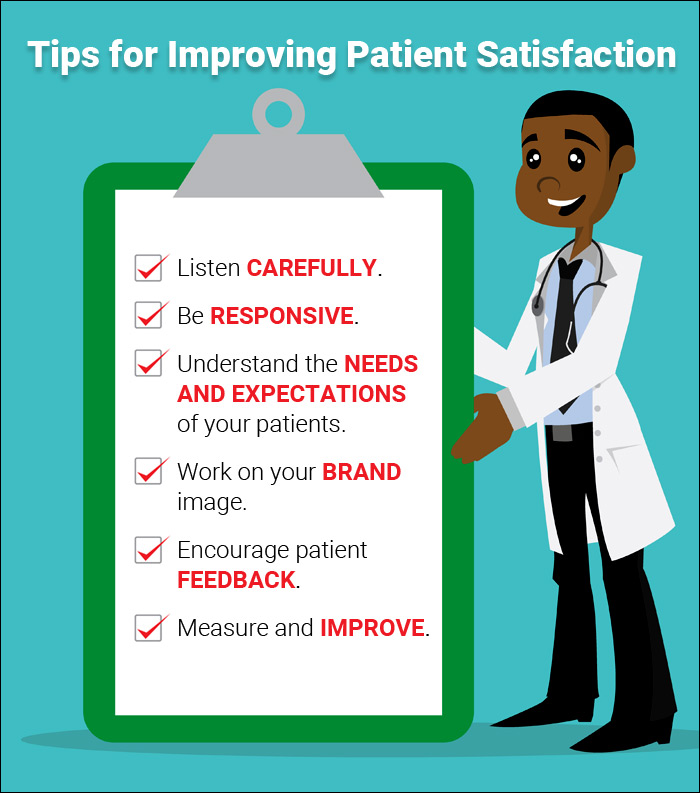Recently, an analysis of over 30,000 online reviews of medical practitioners confirmed poor customer service is the patients’ biggest frustration. In fact, according to this research, 96 percent of patient grievances are due to disappointing customer service, while the other four percent cite misdiagnoses. Today, patients are customers. When they walk through your doors, they have higher expectations than ever before. Moreover, they will not hesitate to utilize the power of social media and tell the world if their experiences with your medical practice are not as expected. It is time for medical practitioners to benchmark and deliver high-quality service as desired by patients because that is the only way to sustain yourself and grow your practice.
Why is the patient experience important?

Value-based performance is forcing medical practitioners to achieve financial objectives along with improving patient satisfaction and experience. This is because patients who have an excellent experience are more likely to return and recommend your practice to others. However, if they are not happy with your service, they will run to your competitor and post negative feedback about your practice on social media. Happy patients, on the other hand, will be immune to competitors and help increase your revenue and profitability. Besides, patient satisfaction is necessary to obtain positive feedback on review websites.
Unfortunately, most medical practitioners do not understand what satisfies a patient. They assume that the biggest factor is the quality of treatment. What they do not understand is that patients have no way to measure the quality they are receiving. Instead, patients rely more on how the doctor and the medical staff respond to their emotional needs.

Here are some of the simplest and most straightforward steps to increase patient satisfaction at your practice:
1. Make your practice look engaging: Patients will form opinions about your practice before they even meet you. The first impression will start with a well-designed, patient-friendly website where visitors can learn about your practice and the range of services you offer. Also, don’t forget to include interactive tools that allow patients to schedule appointments and communicate with your staff through email.
2. Respect your patients: Your staff must commit to giving patients the attention they deserve throughout their visit. Right from the moment the patient arrives for a scheduled appointment until the time he/she leaves, your staff must provide excellent service.
3. Improve communication with patients: Patient communication begins with answering phones with enthusiasm and being willing to answer all of their questions. Your staff should never say no to a patient, even if they don’t have the answer. When patients come in for their scheduled appointments, your front-office staff should make eye contact with them and smile. Be reassuring and comforting if the patients seem restless.
4. Optimize the appointment process: You must try to establish a well-managed appointment scheduling system that has professional templates. You must keep the office phone lines open during lunch hours. This can be done by rotating staff schedules and making sure someone is always available to take phone calls.
5. Be prompt in answering and returning phone calls: Don’t keep patients on hold for more than 30 seconds, and don’t keep transferring calls from one person to the other. You must be sure to return phone calls and emails within a standard time frame. Your staff must be aware of the established time frame for responding to questions. Also, never make patients wait for their scheduled appointments. Check them in and let them know how long they are likely to wait.
6. Simplify the billing process: Patients who are happy with your practice’s billing process are more likely to pay their bill in full, return to the practice and recommend your practice to their family and friends. To provide a seamless experience, your staff should be trained to discuss and collect payment, provide an accurate estimate of the bill and explain the components of the bill to the patient.
7. Establish a process to obtain feedback: One of the most frustrating situations a patient can run into is having a bad experience but never getting the chance to vent concerns. Without the patient’s feedback, your practice will assume everything is fine while the patient is searching for a new medical provider. According to published reports, 55 percent of patients who had a bad experience but received a satisfactory resolution returned to the same practice. So you must keep asking for feedback and give your patients the opportunity to voice their concerns either in the office or soon after they leave. Your staff must be trained to handle negative feedback with an apology and a solution and incorporate that feedback into your operations.
8. Don’t rush through your appointments: As much as possible, try to spend quality time with your patients and listen carefully to their concerns. You must make them feel heard and sit down with them during appointments. Don’t make your patients repeat the same information over and over. You can consider electronic medical records to resolve these redundancies. Making eye contact with the patient as much as you can will indicate that you are paying attention and are engaged with the patient. Don’t keep looking at your watch, and don’t stand with one hand on the door as if you’re trying to run away. When you are in a hurry, your patients may feel anxious and unwelcome.
9. Find ways to follow up with patients: Receiving generic wellness plans would make many patients feel a stronger bond with their medical practitioners. While you can’t act as patients’ daily health coach, you can get them engaged by sending them generic healthcare material between appointments.
10. Foster a caring attitude: Everyone in your practice must operate with a patient-first approach. Your front desk staff is your first point of patient interaction, so their attitude toward patients must be positive and healthy. Attitude is everything, and when your front desk is indifferent, your patients will simply leave.
Reference: https://www.practicebuilders.com/blog/20-effective-and-surefire-ways-to-improve-patient-satisfaction/






























